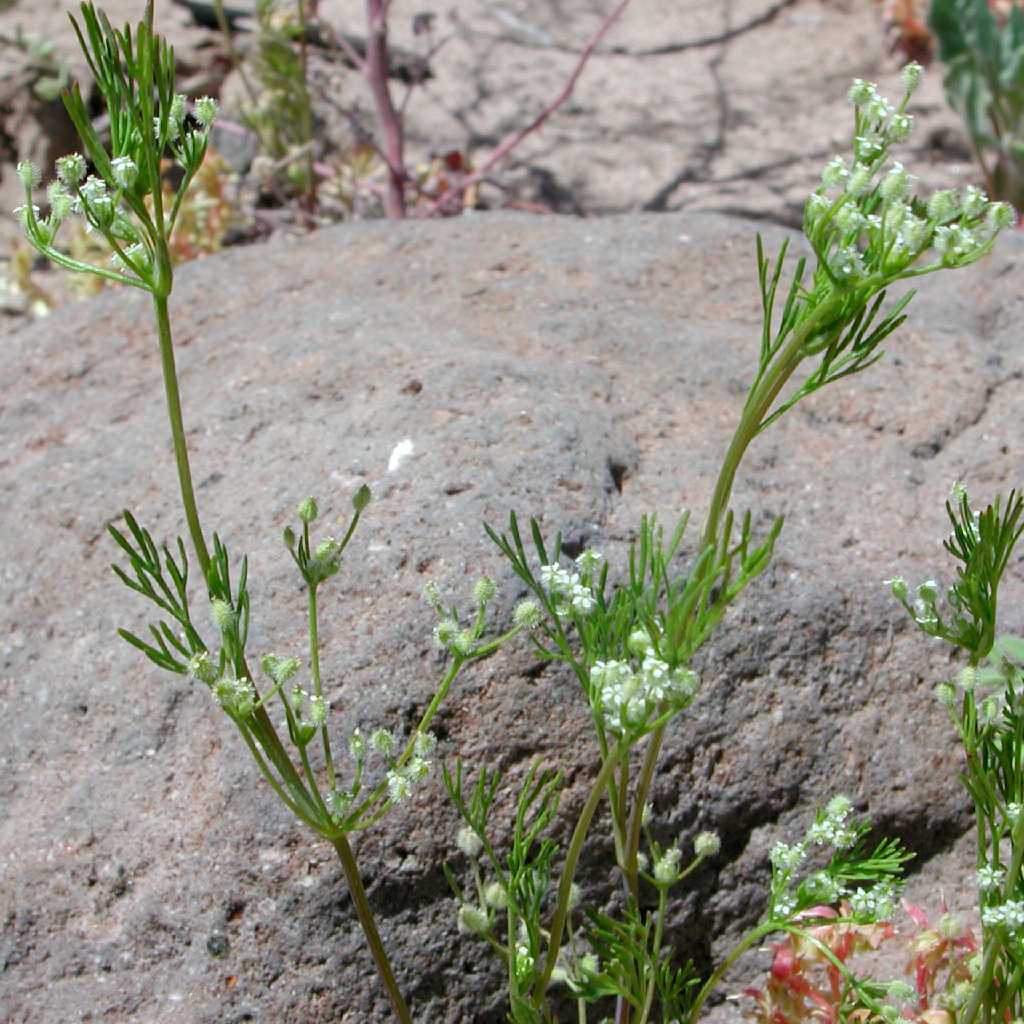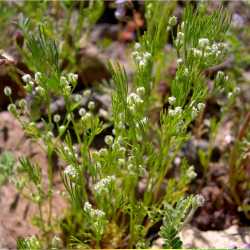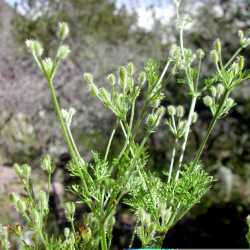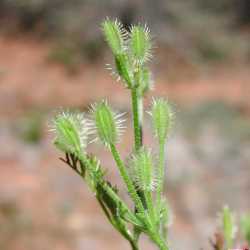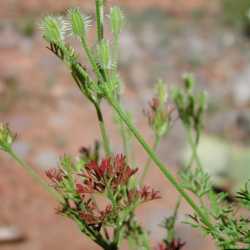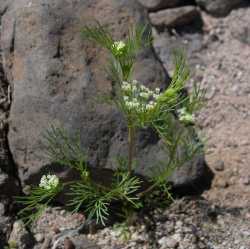Jepson 1993, Kearney and Peebles 1979, Felger et al 2014
Duration: Annual Nativity: Native Lifeform: Forb/Herb General: Slender annual herb, stems 3-40 cm, erect, branching, hispid. Leaves: Alternate, cauline, pinnately decompound, blade 2-6 cm, oblong to ovate in outline; ultimate segments 2-8 mm, linear to thread-like; on petioles 3 cm long. Flowers: White, in axillary and terminal compound umbels (occasionally simple umbels), on peduncles 2-10 cm; umbels with 2-5 leaf-like bracts,1-5 cm, shorter than the umbel rays; secondary umbels with 1-5 leaflike bractlets, 1-10 mm, entire or pinnately divided, shorter than the fruits; rays 1-9, 1-8 mm, erect or ascending, unequal in length; flowers minute, slightly bilateral, with evident calyx lobes and white obovate petals with narrowed tips, on erect pedicels generally less than 15 mm. Fruits: Capsule splitting into 2 single seeded mericarps, 3-7 mm long, oblong, laterally compressed, each carpel with 5 bristly ribs alternating with 4 wings bearing hooked bristles. Ecology: Found on grassy slopes, amid chaparral and woodlands below 5,000 ft (1524 m); flowers March-June. Distribution: Western N. Amer. from ID to British Columbia, south to AZ and Baja California. Notes: Identify this white flowered member of the carrot family by its long stems with few leaves; the delicate leaves divided into linear or threadlike segments; few-flowered leafy umbels with branches that point upward instead of radiating out; and seeds with hooked bristles. Spermolepis echinata appears similar but has smaller seeds, less than 2 mm, is generally glabrous, and its umbels lack leafy bracts. Daucus pusillus has much leafier stems; fruits with barbed (rather than hooked) bristles; and the umbels usually have leafy bracts that are longer and more prominent than the bracts of Yabea microcarpa. Ethnobotany: The crushed fresh leaves were eaten with salt. Etymology: Yabea is named for Yoshisada Yabe (1876-1931) a Japanese botanist, while microcarpa means having small fruits or seed pods. Synonyms: Caucalis microcarpa Editor: SBuckley 2010, AHazelton 2015

